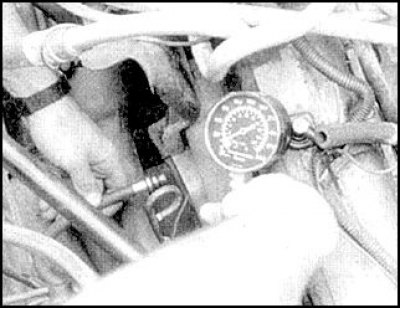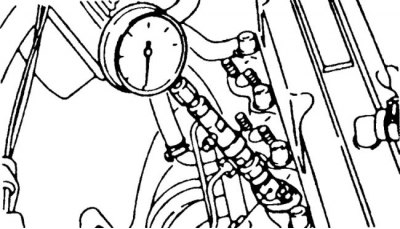Compression gauge for petrol engines

Checking compression in the cylinders of gasoline engines
1. Warm up the engine to normal operating temperature.
2. Turn out candles.
3. Disconnect the high voltage wire from the ignition coil.
4. Fully open the throttle.
5. Screw a compression gauge into the hole for the spark plug of the 1st cylinder.
6. Ask an assistant to press the throttle pedal and turn on the starter (on carburetor and injection engines). The starter should turn on two or three times for a short time.
7. Read the pressure gauge reading at the end of each starter engagement and record the maximum reading. Repeat the procedure for each cylinder. Compression values in the cylinders should be 10.3–11.7 atm (limit 7.2 atm). Compression values in individual cylinders should not differ by more than 10%.
8. If the compression is below normal, then pour about 1 tablespoon of engine oil into the cylinder and repeat the measurements. If the compression has increased, then this indicates wear or breakage of the piston rings, or increased wear on the cylinder walls. If the pressure has not changed, then the cause is a loose fit of the valves to the seats (need valve repair), or damage to the cylinder head gasket next to the cylinder. If there is a low compression value in two adjacent cylinders, which does not change when oil is added, then the cylinder head gasket is damaged.
Diesel Compression Gauge

The verification procedure is no different from that described above, but has its own characteristics.
Compression measurement on diesel engines
1. For diesels, a special compression gauge should be used, designed for much higher pressure.
2. Pipes and nozzles with O-rings should be removed from all cylinders.
3. Track that the valve for bleeding of air on a measuring instrument of a compression was closed.
4. At installation of atomizers replace ring linings.
